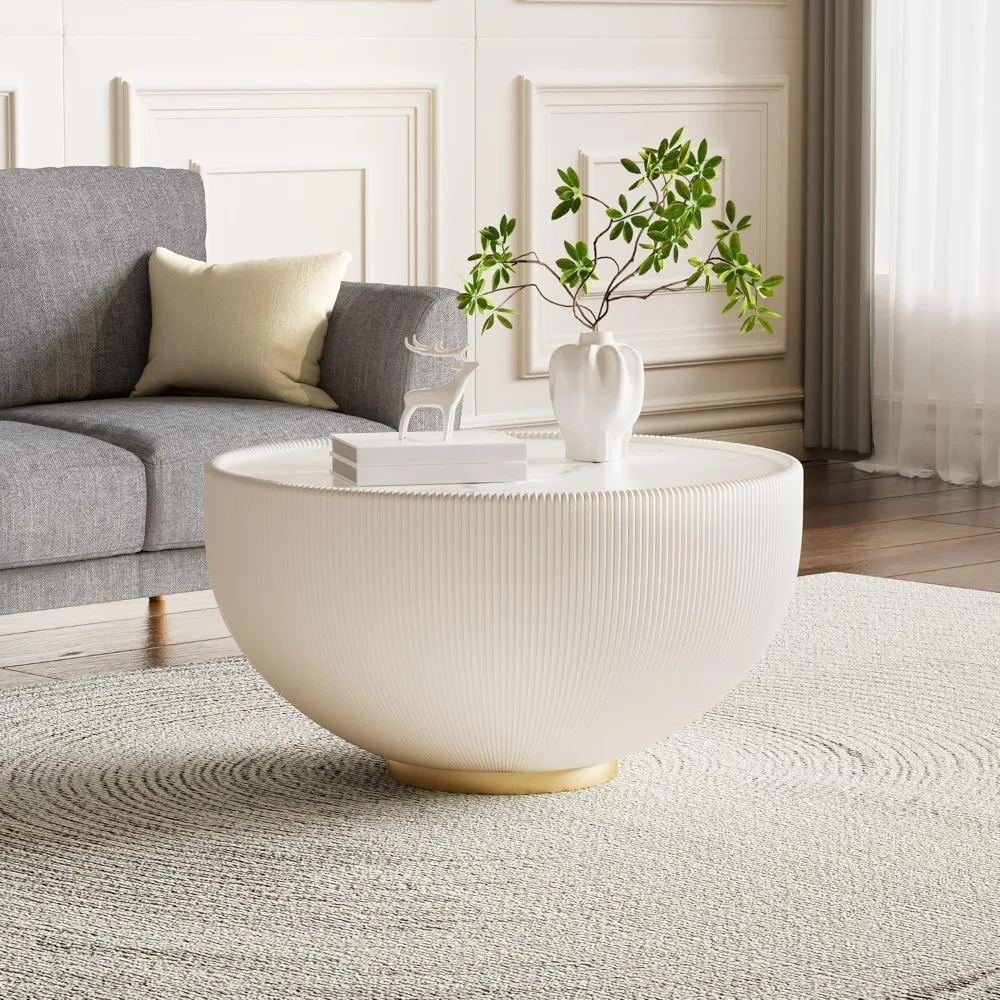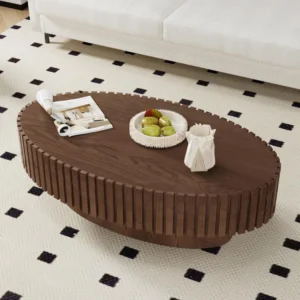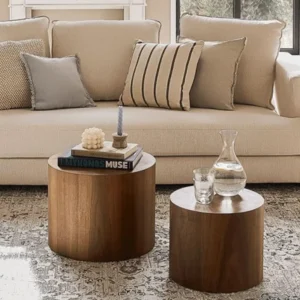Introduction to Scandinavian and Mid-Century Modern Design
Scandinavian and Mid-Century Modern design represent two of the most influential interior design movements that continue to shape our homes today. Both styles emerged as responses to their cultural contexts and have maintained remarkable staying power in the world of interior design.
Scandinavian design, characterized by its light, airy spaces and functional minimalism, developed in the Nordic countries as a practical response to long, dark winters and modest living conditions. The style emphasizes simplicity, functionality, and connection to nature through the use of light woods and organic forms.
Mid-Century Modern design, with its bold forms and innovative use of materials, flourished during a period of post-war optimism and experimentation. This style embraces both organic and geometric shapes while exploring new manufacturing techniques and materials.
Many people confuse these two distinct styles because they share certain qualities—clean lines, functionality, and a timeless appeal. However, understanding their unique characteristics helps in creating more intentional and cohesive interiors. Throughout this article, we’ll explore the essential elements that define each style, from materials and color palettes to shapes and underlying philosophies.
At Hearth Forms, we celebrate the enduring appeal of these design traditions, particularly the intelligent black mid-century coffee tables that showcase the movement’s commitment to form and function. Understanding the nuances of key features in Scandinavian furniture provides valuable context for appreciating both styles’ unique contributions to modern design.
Comparative Overview: Scandinavian vs. Mid-Century Modern at a Glance
| Feature | Scandinavian Design | Mid-Century Modern Design |
|---|---|---|
| Core Philosophy | Democratic design, simplicity, functionality, “hygge” (coziness) | Form follows function, innovation, optimism |
| Time Period | Emerged in early 20th century, popularized mid-century | Flourished from mid-20th century |
| Color Palette | Whites, soft grays, pale blues, neutrals | Warm wood tones, olive green, mustard yellow, orange, teal |
| Primary Materials | Light woods (ash, pine, beech), wool, linen | Walnut, teak, rosewood, molded plastic, fiberglass |
| Forms & Shapes | Simple, clean lines, gentle organic curves | Bold sculptural forms, organic and geometric shapes |
| Overall Aesthetic | Bright, airy, minimal, serene | Warm, bold, sculptural, innovative |
| Functional Priority | Practical everyday use, accessibility | Innovation in form while maintaining function |
While both styles value functionality and clean lines, their expressions differ significantly. Scandinavian vs. Danish coffee table design showcases these subtle but important distinctions, with Danish pieces often representing a bridge between pure Scandinavian minimalism and Mid-Century expressiveness.
The Essence of Scandinavian Design: Form, Function, and Light
Scandinavian design embodies a philosophy rooted in democratic design principles—the belief that beautiful, functional objects should be accessible to everyone, not just the wealthy. This approach emerged from the Nordic countries’ unique circumstances: long, dark winters encouraged bright interiors that maximize light, while modest living conditions demanded practical, multifunctional furniture.
At its core, Scandinavian design embraces:
- Simplicity and minimalism that removes unnecessary ornamentation
- Functionality that prioritizes practical, everyday use
- “Hygge” (pronounced “hoo-ga”), the Danish concept of coziness and comfortable conviviality
- Light maximization through pale colors, reflective surfaces, and open spaces
- Connection to nature through materials and organic forms
The typical Scandinavian interior features white walls, light wood floors, and simple furniture forms that create an atmosphere of calm and airiness. Materials are predominantly natural—pale woods like ash, pine, and beech, complemented by wool, leather, and linen textiles that add texture without overwhelming the space.
Color palettes remain restrained, dominated by whites, soft grays, pale blues, and natural tones. When colors appear, they do so as carefully considered accents that provide visual interest without disrupting the overall serenity of the space.
Understanding the principles of minimalist Scandinavian living rooms reveals how this design philosophy creates spaces that feel both practical and peaceful.
Key Elements of Scandinavian Furniture Design
Scandinavian furniture demonstrates distinct characteristics that set it apart from other design movements:
- Clean, simple lines that emphasize function while maintaining visual lightness
- Light-colored wood construction with visible grain that highlights natural beauty
- Organic, gentle curves that soften the minimalist approach
- Multifunctional pieces designed for smaller living spaces, often with storage solutions integrated
- Visible craftsmanship that celebrates the making process rather than hiding it
- Minimal ornamentation that lets materials and forms speak for themselves
Typical Scandinavian furniture includes clean-lined sofas with slender profiles, dining chairs with subtly rounded backs, and tables with thin tops and tapering legs. Upholstery tends toward natural fabrics in neutral tones, occasionally featuring subtle patterns inspired by nature.
The emphasis on craftsmanship doesn’t result in flashiness—rather, it appears in the thoughtful joinery, careful proportions, and attention to how pieces feel in use. Scandinavian table design for functional living rooms demonstrates how these principles create pieces that work beautifully in daily life while maintaining visual simplicity.
The Character of Mid-Century Modern Design: Innovation and Organic Forms
Mid-Century Modern design emerged during a period of unprecedented optimism and innovation. This design movement embraced the exciting possibilities of new manufacturing techniques and materials while maintaining the principle that form should follow function.
At its foundation, Mid-Century Modern design features:
- Innovative exploration of new materials and manufacturing methods
- Clean lines paired with organic, sculptural forms
- Indoor-outdoor connection through large windows and nature-inspired shapes
- Mixed material use combining traditional and experimental elements
- Statement pieces that serve as functional art
The materials palette of Mid-Century Modern design centers on rich, warm woods like walnut, teak, and rosewood, often contrasted with innovative materials of the era—molded plywood, fiberglass, plastic, and metal. This juxtaposition of natural and man-made materials creates dynamic visual and textural interest.
The color palette expands beyond neutrals to include warm wood tones complemented by earthy colors (olive greens, burnt oranges, mustard yellows) and occasionally bold accent colors that create visual energy. These colors reflect the era’s optimistic spirit and experimental approach.
Enthusiasts of mid-century modern table design appreciate how these pieces balance bold sculptural qualities with practical functionality.
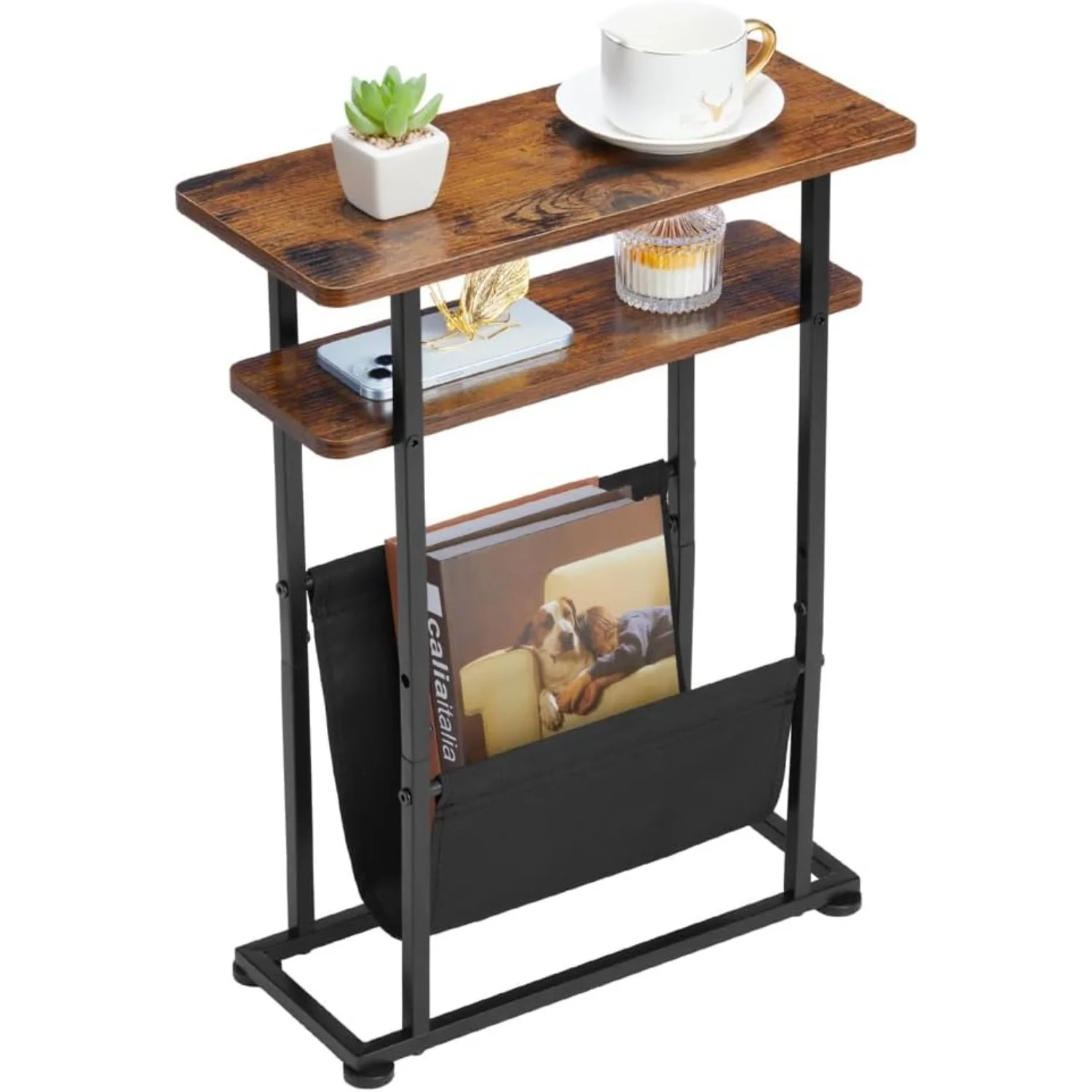
Key Elements of Mid-Century Modern Furniture Design
Mid-Century Modern furniture stands apart through several distinctive characteristics:
- Sculptural statement pieces designed to serve as room focal points
- Material juxtaposition combining different materials within single pieces
- Tapered, angled legs creating a sense of lightness despite solid construction
- Innovative use of bent plywood and molded materials
- Clean-lined case goods often featuring contrasting materials for handles or legs
- Intentional geometric or organic shapes that create visual interest
Iconic Mid-Century Modern furniture pieces often feature innovative shapes—organic, curved seating elements resting on slender, angled legs; tables with rounded triangular tops; storage pieces with sliding panels of contrasting materials. Our collection of mid-century modern walnut coffee tables showcases the rich, warm tones and sculptural elements characteristic of this design tradition.
Material Differences: Wood, Texture, and Innovation
One of the clearest distinctions between Scandinavian and Mid-Century Modern design lies in their material choices and applications.
Scandinavian design typically features light woods like ash, pine, and beech—species native to Nordic countries that create bright, airy spaces when used for furniture and flooring. Finishes tend toward clear or white-tinted treatments that preserve the wood’s natural appearance while adding brightness. The resulting aesthetic feels clean, light, and natural.
In contrast, Mid-Century Modern design gravitates toward darker, richer woods like walnut, teak, and rosewood. These woods are often finished to emphasize their natural color and grain patterns, creating warm, rich surfaces. The mid-century modern teak coffee tables in our collection demonstrate how these woods develop beautiful patinas over time, enhancing their visual depth.
Beyond wood, the approaches to other materials differ significantly. Scandinavian design incorporates natural textiles like wool, linen, and leather in pale, neutral tones. Mid-Century Modern design more boldly experiments with materials new to the era—fiberglass, molded plywood, plastic, and metal—often combining them with traditional materials for contrast.
This material difference creates distinct tactile experiences—Scandinavian interiors feel organic and subtly textural, while Mid-Century Modern spaces offer more varied material contrasts and visual complexity.
Color Palette Distinctions: Neutrals vs. Earth Tones
Color choices provide another striking difference between these design traditions.
Scandinavian interiors embrace a palette dominated by whites, creams, soft grays, and pale blues—colors that maximize light reflection during dark Nordic winters. This approach creates bright, airy spaces that combat seasonal darkness. Natural wood tones provide gentle warmth, while textiles might introduce subtle patterns or occasional muted colors as accents.
Mid-Century Modern interiors feature more saturated colors drawn from an earthy palette: rich browns from wood tones, mustard yellows, olive greens, burnt oranges, and deep teals. These colors complement the warm wood tones typical of Mid-Century furniture while adding visual energy to spaces. Black mid-century coffee table design demonstrates how darker elements create dramatic focal points within this color scheme.
In Scandinavian spaces, color accents appear thoughtfully and sparingly, maintaining the overall sense of calm. Mid-Century Modern interiors more freely incorporate color through furniture, textiles, and accessories, creating more dynamic visual experiences.
Form and Shape Philosophy: Clean Lines vs. Sculptural Statements
The approach to form represents perhaps the most philosophical difference between these design movements.
Scandinavian design embraces clean, simple lines with subtle organic influences. Furniture forms appear understated, with gentle curves softening what might otherwise be too austere. The emphasis remains on visual lightness, functionality, and timelessness rather than bold statements. Chair backs might have subtle curves, table edges might be gently rounded, but nothing demands attention through shape alone.
Mid-Century Modern design takes a more expressive approach to form, creating furniture that functions as sculptural statements. Organic, biomorphic shapes inspired by nature appear alongside geometric elements. The iconic Mid-Century chair might feature a molded seat in an organic shape perched on dramatically angled legs. Tables might have kidney-shaped or triangular tops with tapered legs.
Our mid-century modern solid wood coffee tables collection showcases how these bold forms create visual interest while maintaining functionality.
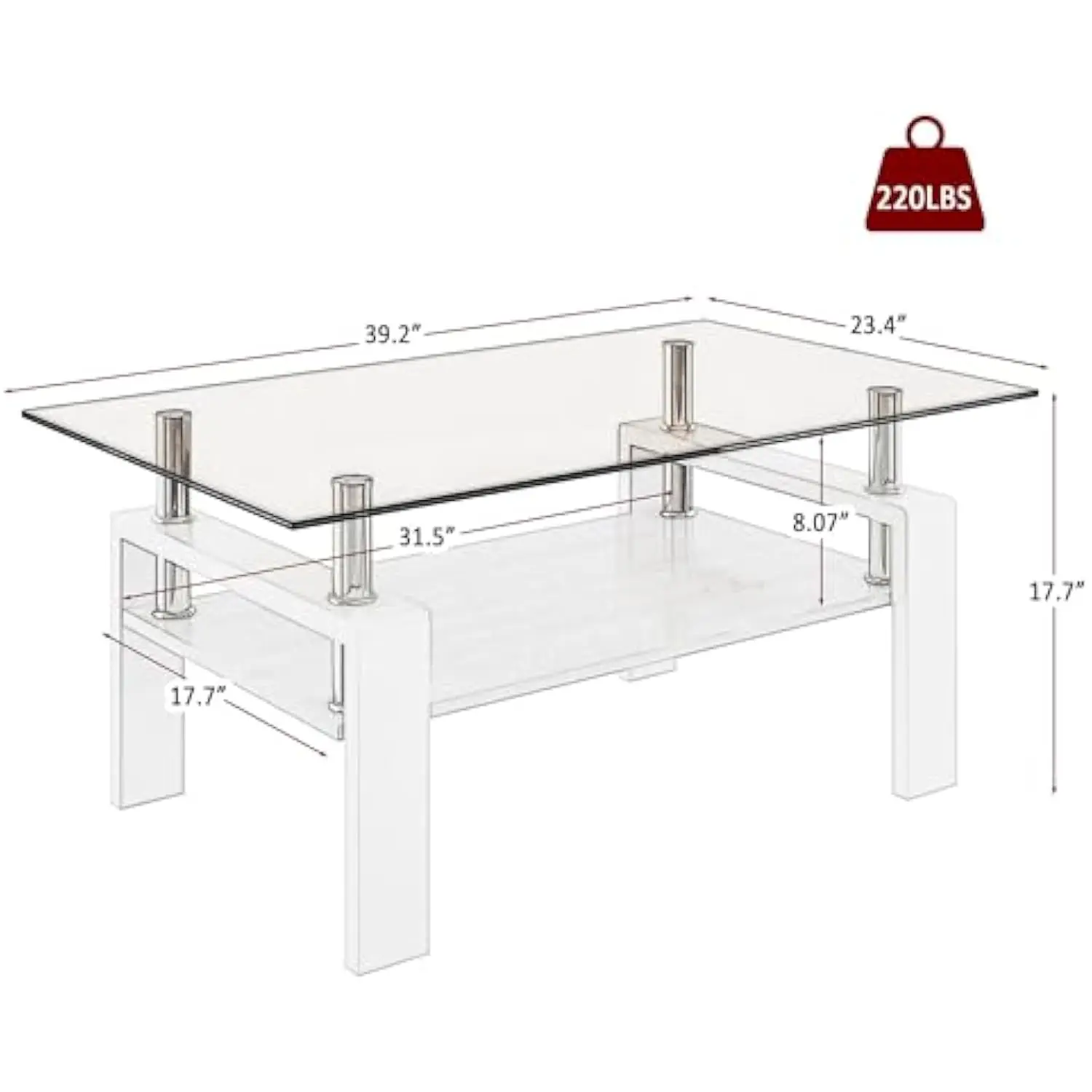
Blending the Best of Both Worlds: Creating Harmonious Interiors
Despite their differences, Scandinavian and Mid-Century Modern designs can work beautifully together when thoughtfully combined. Their shared values of functionality, clean lines, and quality craftsmanship provide common ground for creating cohesive interiors.
Consider these practical approaches for blending these styles:
- Use a consistent color palette as your foundation, perhaps leaning toward the Scandinavian approach with whites and neutrals, then introducing Mid-Century earth tones as accents
- Balance statement Mid-Century pieces with simpler Scandinavian elements—an iconic Mid-Century chair might pair perfectly with a clean-lined Scandinavian sofa
- Maintain cohesive wood tones by choosing either all light woods or creating intentional contrast between light and dark pieces
- Focus on the shared design language—clean lines, functional forms, and quality materials
This approach allows you to create spaces that feel cohesive despite drawing from different design traditions. Understanding styles that go well with mid-century modern helps create these harmonious combinations.
How to Identify Authentic Elements of Each Style
Recognizing genuine elements of each design tradition helps in both appreciating their differences and creating authentic spaces:
Scandinavian Identifiers:
– Light, pale woods with visible grain
– Straight or gently tapered legs without dramatic angles
– Minimal hardware that doesn’t call attention to itself
– Clean joinery with occasional exposed detail
– Natural materials throughout
– Subtle curves and soft edges
– Light, matte finishes
Mid-Century Modern Identifiers:
– Rich, medium to dark wood tones
– Dramatically tapered legs, often angled outward
– Mixed materials within single pieces
– Bold organic or geometric shapes
– Exposed wood frames with upholstered elements
– Hardware as design feature (brass pulls, contrasting details)
– Satin or semi-gloss finishes that highlight wood grain
Our mid-century modern Danish coffee tables collection showcases authentic elements that bridge these styles, as Danish design often represents a middle ground between pure Scandinavian minimalism and bolder Mid-Century expression.
Quality Markers: What Makes Exceptional Scandinavian and Mid-Century Furniture
Despite their aesthetic differences, quality Scandinavian and Mid-Century Modern furniture share certain hallmarks:
- Solid wood construction for primary structural elements
- Expert joinery that will last generations (dovetail drawers, mortise and tenon joints)
- Authentic materials true to each tradition
- Balanced proportions that feel “right” visually and functionally
- Smooth, consistent finishes that enhance rather than mask materials
- Attention to detail in less visible areas like drawer interiors or chair undersides
- Comfort combined with aesthetics rather than sacrificing one for the other
These quality markers distinguish exceptional pieces from mass-produced imitations. At Hearth Forms, we prioritize these elements when selecting our mid-century modern glass-top coffee tables and other furniture pieces, ensuring they represent the authentic design traditions we celebrate.
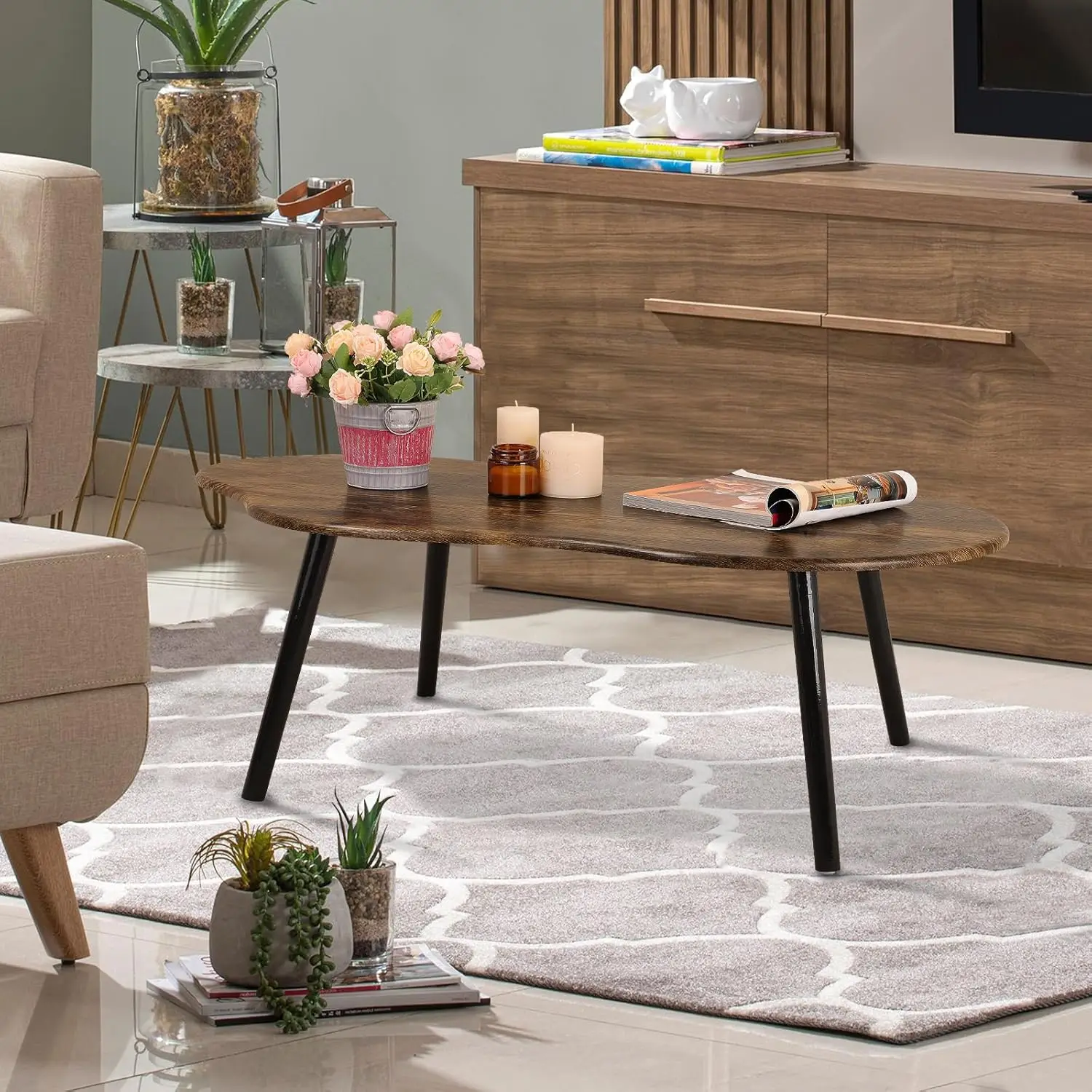
Mid-Century Modern Solid Wood Coffee Tables, Mid-Century Modern Teak Coffee Tables
$879.95 Select options This product has multiple variants. The options may be chosen on the product pageMid-Century Modern Danish Coffee Tables, Mid-Century Modern Oval Coffee Tables, Mid-Century Modern Solid Wood Coffee Tables
$390.05 Select options This product has multiple variants. The options may be chosen on the product pageMid-Century Modern Glass Top Coffee Tables, Mid-Century Modern Glass Top Side & End Tables
$460.58 Select options This product has multiple variants. The options may be chosen on the product pageMid-Century Modern Glass Top Coffee Tables, Mid-Century Modern Vintage Coffee Tables, Mid-Century Modern Vintage Side & End Tables
$725.36 Select options This product has multiple variants. The options may be chosen on the product pageMid-Century Modern Oval Coffee Tables, Mid-Century Modern Solid Wood Coffee Tables
$679.56 Select options This product has multiple variants. The options may be chosen on the product pageMid-Century Modern Nesting Table Sets, Mid-Century Modern Round Coffee Tables
$462.57 Select options This product has multiple variants. The options may be chosen on the product page
FAQ: Common Questions About Scandinavian and Mid-Century Modern Design
Is Scandinavian design a subset of Mid-Century Modern?
No, they are distinct design traditions that developed concurrently. While they share some common influences and principles (functionality, clean lines), Scandinavian design emerged from Nordic countries with specific cultural contexts, while Mid-Century Modern developed with stronger influences from American and international designers. They represent parallel rather than hierarchical design movements.
Can you mix Scandinavian and Mid-Century Modern pieces successfully?
Yes, these styles complement each other beautifully when thoughtfully combined. Their shared emphasis on clean lines, quality materials, and functionality provides common ground. Focus on creating balance—pair a statement Mid-Century piece with simpler Scandinavian elements, or use a consistent color palette to unify different furniture styles.
Which style is more suitable for small spaces?
Scandinavian design often works particularly well in smaller spaces because of its emphasis on light colors, visual lightness, and multifunctional furniture. However, carefully selected Mid-Century pieces can also work beautifully in small spaces—look for pieces with tapered legs that create a sense of openness underneath furniture.
How do lighting fixtures differ between styles?
Scandinavian lighting tends toward simple, functional forms with diffused light that creates gentle illumination. Mid-Century lighting makes more dramatic statements with sculptural forms, innovative materials, and often directional rather than ambient light. Both prioritize function while expressing their distinct design languages.
What textiles best complement each style?
Scandinavian spaces feature natural textiles like wool, linen, and cotton in neutral tones with subtle patterns (often nature-inspired). Mid-Century Modern textiles embrace bolder geometric patterns, textural weaves, and the earthy color palette characteristic of the style. Both value natural fibers and quality construction.
Selecting Quality Tables: What to Look for in Mid-Century Modern Design
When evaluating mid-century modern tables, several key elements distinguish exceptional pieces:
- Authentic proportions that reflect original mid-century principles—look for balanced relationships between top thickness, height, and leg dimensions
- Quality joinery where legs meet aprons or tops, with reinforced corners and precise fits
- Solid wood construction for structural elements, particularly legs and frames
- Consistent grain matching across surfaces, especially on veneered tops
- Smooth, even finishes that highlight rather than disguise the wood’s natural beauty
- Tapered legs with proper angle and profile typical of mid-century design
- Functional considerations like stable bases and appropriate heights for intended use
Quality mid-century tables function as both practical surfaces and artistic focal points within a room. Our mid-century modern round coffee tables exemplify how these design principles create pieces that enhance daily living through both form and function.
Legacy and Influence: How These Styles Continue to Shape Modern Interiors
The enduring appeal of Scandinavian and Mid-Century Modern design speaks to their timeless qualities. Today’s interiors continue to draw inspiration from both traditions, whether through authentic vintage pieces, faithful reproductions, or contemporary interpretations.
Modern designers frequently reference these styles’ core principles—clean lines, quality materials, and the balance between form and function. The lasting popularity of both Scandinavian and Mid-Century Modern aesthetics stems from their successful combination of practical functionality and visual appeal.
Quality pieces from these traditions become more than just furniture—they become heirlooms that tell stories across generations. Their craftsmanship ensures longevity, while their timeless design ensures they remain relevant despite changing trends. Decorating black mid-century coffee tables demonstrates how these classic pieces continue to inspire contemporary styling approaches.
By understanding the distinctive elements of each tradition, today’s design enthusiasts can make more informed choices—whether faithfully recreating a period look or thoughtfully blending elements to create spaces uniquely their own.

